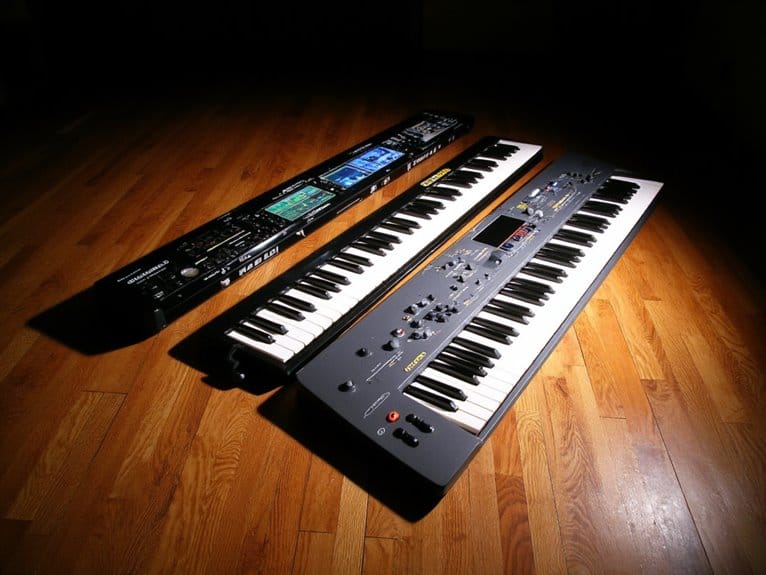Color Temperature in Studio Lighting: Choosing the Right Tone for Your Workspace
Hey there! Are you looking to bring some life into your workspace with the magic of studio lighting? Well, let's dive into the world of color temperature and see how it can totally transform your creative environment. In this article, we'll talk about why it's super important to choose the right tone for your studio lighting setup. So, buckle up, because we're about to unleash a wave of creativity!
We are supported by our audience. When you purchase through links on our site, we may earn an affiliate commission, at no extra cost for you. Learn more.
Okay, so first things first, what exactly is color temperature? Imagine it as the mood ring of lighting. It's all about the vibes, baby! Color temperature is a way to measure the warmth or coolness of light. It helps create different atmospheres and sets the tone for your workspace.
Now, let's talk about why choosing the right color temperature is crucial. Think about it like choosing the right outfit for a party. You want to look and feel your best, right? Well, the same goes for your workspace. When you have the right color temperature, it's like wearing that perfect outfit that makes you feel confident and ready to conquer the world. It sets the mood and enhances the overall atmosphere.
So, how do you choose the right color temperature for your studio lighting? Good question! It all depends on the vibe you want to create. Are you going for a warm, cozy feel or a cool and modern aesthetic? Different color temperatures can evoke different emotions and enhance different art forms. It's like painting with light!
Now, here's a pro tip: experiment, experiment, experiment! Don't be afraid to play around with different color temperatures and see what works best for you. After all, creativity is all about taking risks and trying new things. So, go ahead and let your imagination run wild!
Remember, this isn't just about lighting. It's about creating an innovative and inspiring workspace that fuels your creativity. So, don't be afraid to think outside the box and make your studio lighting a true reflection of who you are as an artist.
Alright, my friend, you're now armed with the knowledge and tips you need to rock your studio lighting setup. Get ready to create a space that inspires and motivates you to reach new heights. Unleash your creativity with the power of color temperature!
Now, go forth and light up the world with your brilliance!
The Importance of Color Temperature
Understanding color temperature is crucial when it comes to creating the right atmosphere in your studio workspace. The importance of color temperature lies in its ability to evoke specific emotions and moods, ultimately enhancing your creative process. In the world of studio lighting, color temperature refers to the warmth or coolness of the light emitted by a light source. Warm light, with a lower color temperature, creates a cozy and inviting atmosphere, perfect for intimate and relaxed settings. On the other hand, cool light, with a higher color temperature, provides a more energizing and focused environment, ideal for tasks that require concentration and precision. By carefully selecting the color temperature of your studio lighting, you can optimize your workspace to suit your specific needs, fostering an innovative and productive environment.
Understanding Color Temperature Scales
To understand color temperature scales, you need to grasp the concept of how different light sources emit varying levels of warmth or coolness. The color temperature scale measures the color appearance of light sources, ranging from warm, reddish tones to cool, bluish tones. It is measured in Kelvin (K), with lower values representing warmer colors and higher values representing cooler colors. Incandescent bulbs, for example, typically have a color temperature of around 2700K, emitting a warm, yellowish light. On the other hand, daylight has a color temperature of around 5500K, providing a cool, bluish light. Understanding color temperature scales is crucial in studio lighting as it allows you to create the desired atmosphere and mood in your workspace. By choosing the right color temperature, you can enhance productivity and creativity while ensuring accurate color representation in your work.
Effects of Warm Color Temperature on Workspace
Experience a cozy and inviting atmosphere in your workspace with the effects of warm color temperature. Warm color temperatures, typically ranging from 2700K to 3500K, emit a yellowish-orange glow that creates a sense of warmth. This can have a positive impact on your workspace, enhancing comfort and productivity. The warm light mimics natural sunlight during sunrise and sunset, which promotes relaxation and reduces eye strain. Additionally, warm colors have been shown to evoke feelings of happiness and calmness, helping to create a pleasant and enjoyable work environment. The warm color temperature also complements warmer interior design elements, such as wooden furniture or warm-colored walls, creating a cohesive and visually appealing workspace. By incorporating warm color temperature lighting into your workspace, you can transform it into a cozy and inviting space that promotes productivity and innovation.
Effects of Cool Color Temperature on Workspace
Enhance the productivity and focus in your workspace with the energizing effects of cool color temperature lighting. Cool color temperature, typically ranging from 5000K to 6500K, creates a crisp and bright atmosphere, ideal for tasks that require concentration and attention to detail. The cool blue tones emitted by these lights promote alertness, helping you stay focused and engaged throughout your workday. Additionally, cool color temperature lighting has been found to stimulate creativity and innovation, making it an excellent choice for brainstorming sessions and collaborative work environments. By incorporating cool color temperature lighting into your workspace, you can create a vibrant and stimulating atmosphere that encourages productivity and innovation. So, why not harness the power of cool color temperature lighting to boost your performance and achieve your professional goals?
Choosing the Right Color Temperature for Photography
When choosing the right color temperature for photography, it is important to consider the desired mood and aesthetic of your images. Color temperature refers to the warmth or coolness of light, which can greatly impact the overall look and feel of your photographs. For a warm and inviting atmosphere, a color temperature around 3000K to 4000K is recommended. This creates a cozy and intimate ambiance, perfect for portraits or indoor shots. On the other hand, if you're aiming for a crisp and clean aesthetic, a cooler color temperature of around 5000K to 6500K works well. This cooler light gives your photos a fresh and modern feel, making it ideal for product photography or architectural shots. Ultimately, the right color temperature for your photography depends on your desired outcome and the emotions you want to evoke in your viewers.
Creating a Balanced Lighting Setup
To achieve a balanced lighting setup, focus on adjusting the intensity and positioning of your lights. Intensity refers to the brightness level of your lights, while positioning determines where the light is directed. By carefully adjusting these factors, you can create a lighting setup that evenly illuminates your workspace and eliminates any unwanted shadows or hotspots.
Start by considering the purpose of your lighting setup. Are you looking to create a bright and evenly lit environment for tasks that require precision, or do you want to create a more dramatic and dynamic atmosphere?
Next, experiment with the intensity of your lights. Use dimmer switches or adjustable light fixtures to find the perfect balance between brightness and comfort. Avoid excessively bright lights that can cause eye strain, while ensuring that the lighting is adequate for your specific tasks.
In terms of positioning, consider the angles and heights at which your lights are placed. Direct the light towards the areas that require the most illumination, while avoiding any direct glare or reflections that could be distracting or uncomfortable.
Adjusting Color Temperature for Different Art Forms
Experiment with different color temperatures to enhance the visual impact of your artwork. Each art form has its own unique characteristics and requirements when it comes to lighting. By adjusting the color temperature, you can create a specific mood or atmosphere that complements your chosen art form. For example, in photography, warmer color temperatures such as 3000K can add a cozy and intimate feel, while cooler temperatures like 6000K can create a crisp and vibrant look. Similarly, in painting, choosing a color temperature that matches the overall tone of your artwork can bring out the true colors and details. In sculpture, experimenting with different color temperatures can highlight the texture and form of the piece. Remember, the right color temperature can make a significant difference in how your artwork is perceived, so don't be afraid to explore and find the perfect lighting temperature for your art form.
Tips for Enhancing Creativity With Color Temperature
One way to enhance your creativity with color temperature is by understanding how different tones can affect your workspace. Color temperature refers to the warmth or coolness of light, measured in Kelvin (K). Warm tones, such as those in the range of 2700K to 3500K, create a cozy and inviting atmosphere that can stimulate your imagination. On the other hand, cool tones, ranging from 5000K to 6500K, promote focus and productivity. By experimenting with different color temperatures, you can create a dynamic and versatile environment that suits your creative needs. Consider using warmer tones for brainstorming sessions or relaxation, while cooler tones can be used for tasks that require concentration and precision. Remember, finding the right color temperature for your workspace is essential for fostering creativity and optimizing your productivity.
Conclusion
In conclusion, understanding and choosing the right color temperature for your studio lighting is crucial for creating a productive and inspiring workspace. By considering the effects of warm and cool color temperatures on your environment, you can optimize your lighting setup to enhance creativity and productivity. Remember to create a balanced lighting setup and adjust the color temperature according to your specific art form. By utilizing the power of color temperature, you can create a workspace that fosters optimal results in your creative endeavors.







